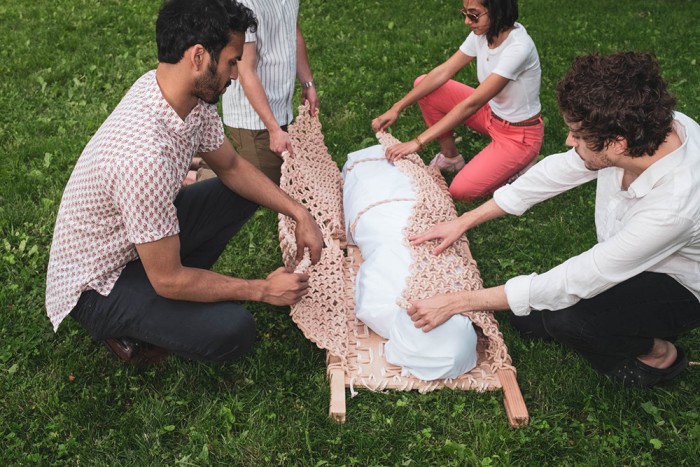Part of the Project
From the Series
Industrial designer Shaina Garfield came face to face with her own mortality when she contracted Lyme Disease. It's an infectious disease that brings about severe chronic symptoms that Garfield still battles.
The immediacy of one’s own death is not an experience very many of us share. But, dealt this untimely hand, Garfield began to ruminate on how her life would look, feel, and end.
While her illness, usually caused by an insect bite, was so closely tied to nature, Garfield came to the conclusion that she nonetheless felt most at home in the natural world - this is a far cry from the traditional funeral scenario.
Burial, the ritual of placing people or animals in the ground, has been traced back to roughly 130 000 years ago when the Neanderthals still walked the Earth.
Throughout time, the practice has been thought of as a way to honour and pay respect to the dead. In a more practical sense, it also prevents the spread of disease if the deceased died of a contagious illness.
While burial takes place in a variety of ways conceived of within the many cultures that span the globe, the most popularised version is undoubtedly the coffin, and it's polluting the planet.
From the coffin (a bulky formation of wood, steel and cushioning) to the toxic embalming fluid often used to preserve dead bodies, this widespread burial practice pollutes the earth, rendering the topsoil useless for growth.
So each time we bury a loved one, we’re also injecting a huge amount of non-biodegradable poison into the soil.
Garfield wanted her ceremony to be different so she created her own coffin.
Leaves is a sustainable coffin that uses fungus indigenous to the region of the burial to help decompose the body and feed the soil around it.
Garfield will be one of 12 Global Graduates who will speak at Design Indaba Festival 2019.
Once the body is wrapped in a cloth, it’s once again wrapped in a rope that has been infused with fungal spores. Not only does the fungi help decompose the body, but it also eats the body’s toxins so that only nutrients are left behind.
The rope is easily woven by hand, adding another layer of beauty and ritual to the burial process.
“I used the fungus with the rope because I wanted the loved ones who were mourning someone’s death to participate in making a coffin,” she says. “Macrame and weaving rope is a beautiful process that’s really meditative and emotional.”
Above all, it’s a reconnection with the natural world. “We still separate us from nature, so I wanted my project to make that connection that we are nature.”
Garfield's project is part of a global green burial movement that seeks to consider and make drastic changes to the impact we have on the environment when we bury our dead.
More to come at Design Indaba Festival 2019
Read More:
Watch Garfield deliver a talk on her process at Antenna Conference, a Design Indaba project













